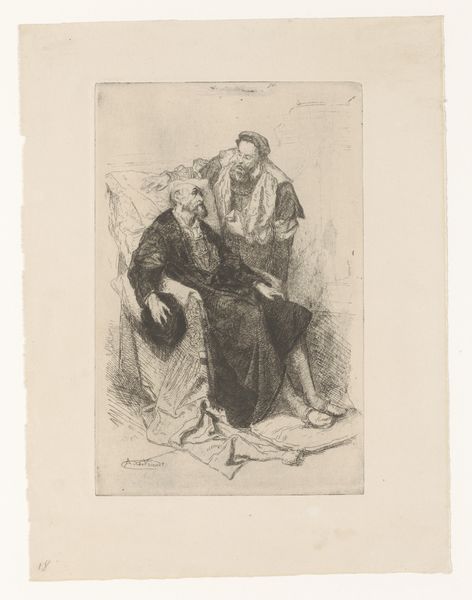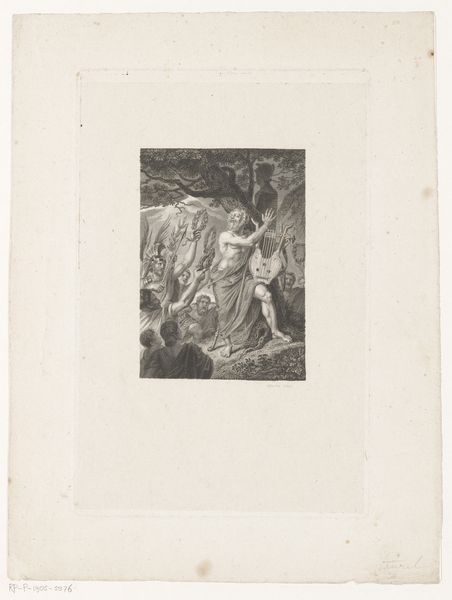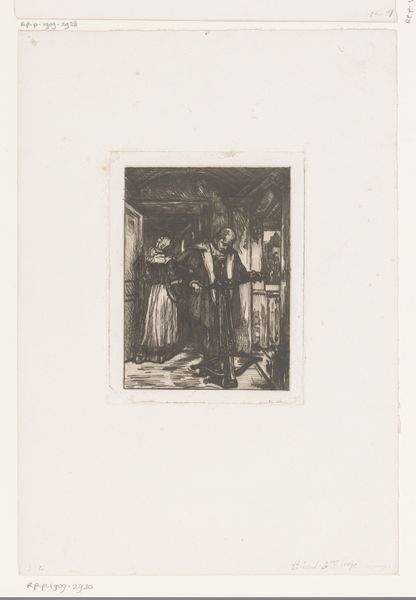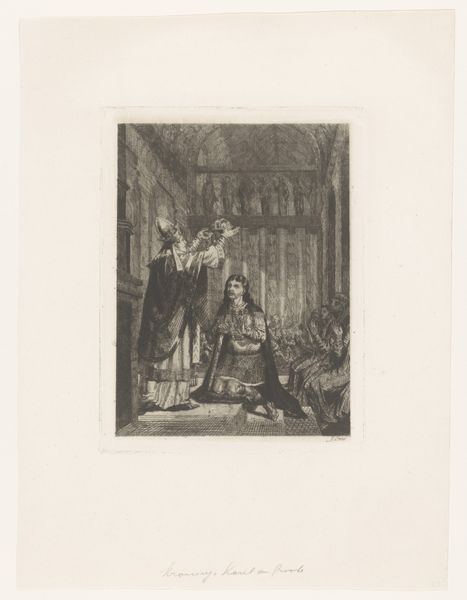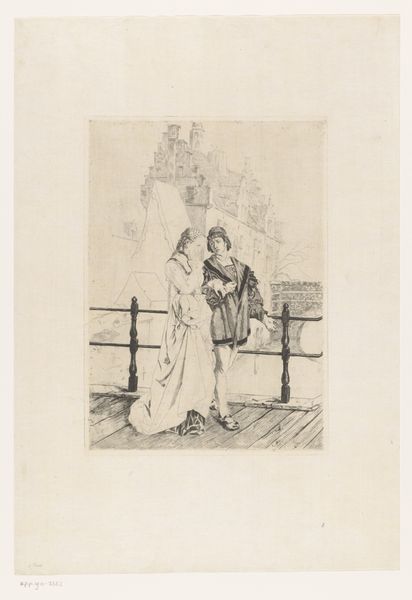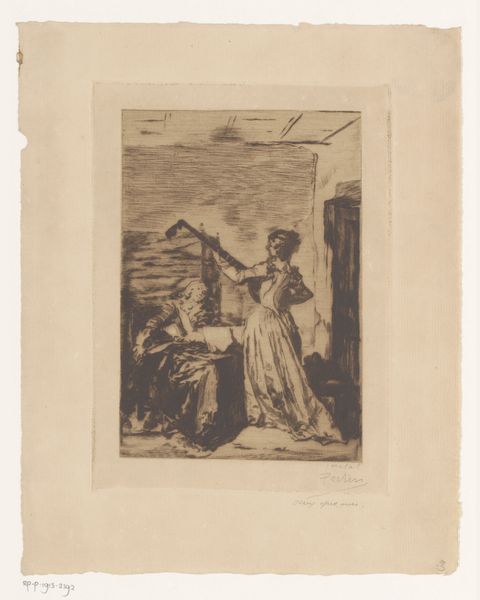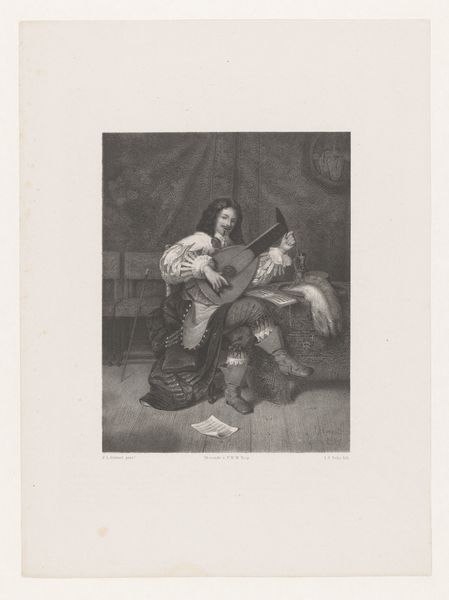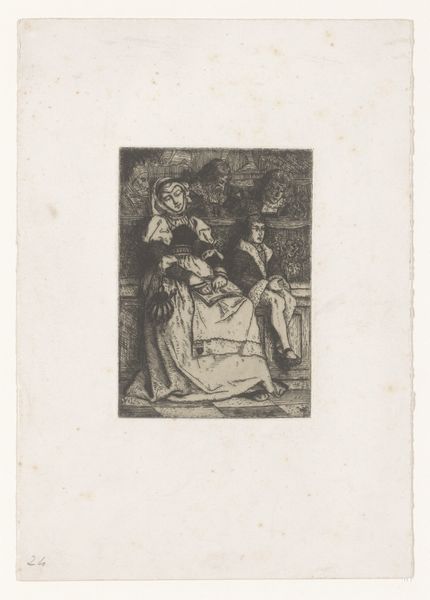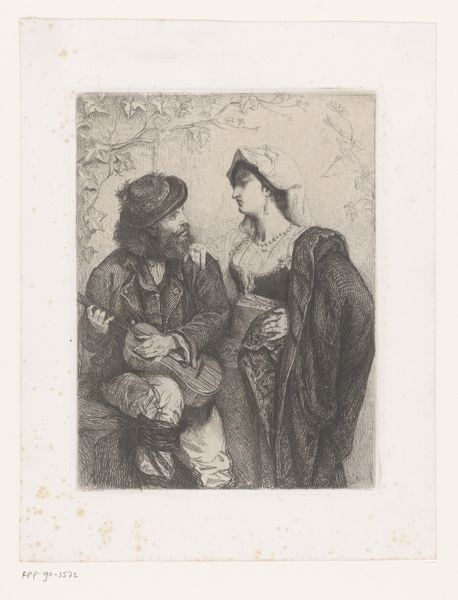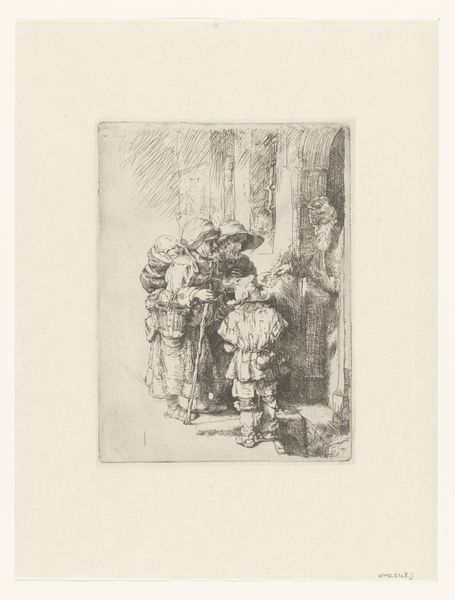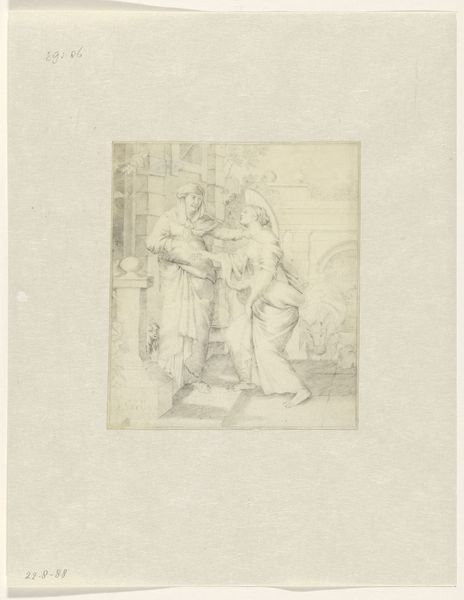
drawing, pencil
#
drawing
#
group-portraits
#
pencil
#
cityscape
#
genre-painting
Dimensions: height 180 mm, width 133 mm
Copyright: Rijks Museum: Open Domain
Editor: This pencil drawing, "Well-to-do Citizens Strolling Through the City" by Henri Leys, dating back to 1865, has a certain stillness to it. It feels like a paused moment, almost like an early photograph. What compositional elements stand out to you? Curator: The artist employs a linear, almost graphic approach. Note the dominance of line and form, prioritizing contour over tone. The restricted use of hatching creates flat figures. Editor: Yes, the lines create the forms. The background is barely there; the clothing and foreground figures are the focal point. But why depict them in older clothing styles, not contemporary? Curator: Consider Leys’ intent through the graphic language. Does the self-conscious archaicism of the clothing become an active form or pictorial convention? Is Leys deliberately making use of recognizable period attire to comment on timeless social structure through the signifiers of clothing? Note the limited dynamic range in his drawing. The medium is employed only to record details. Editor: I see your point. The choice to highlight outlines, while avoiding chiaroscuro and depth cues, presents these people more as universal types rather than individuals rooted in a specific time. Curator: Precisely. A focus on form underscores the thematic construction rather than surface realism, revealing a deeper intent within the composition. Are we to understand his subjects primarily as an emblem? Editor: It's less about accurately portraying reality and more about a focus on specific choices that tell a more nuanced story. Curator: Exactly. The interplay of archaic style and composition invites layered interpretations, revealing that visual choices guide meaning.
Comments
No comments
Be the first to comment and join the conversation on the ultimate creative platform.
